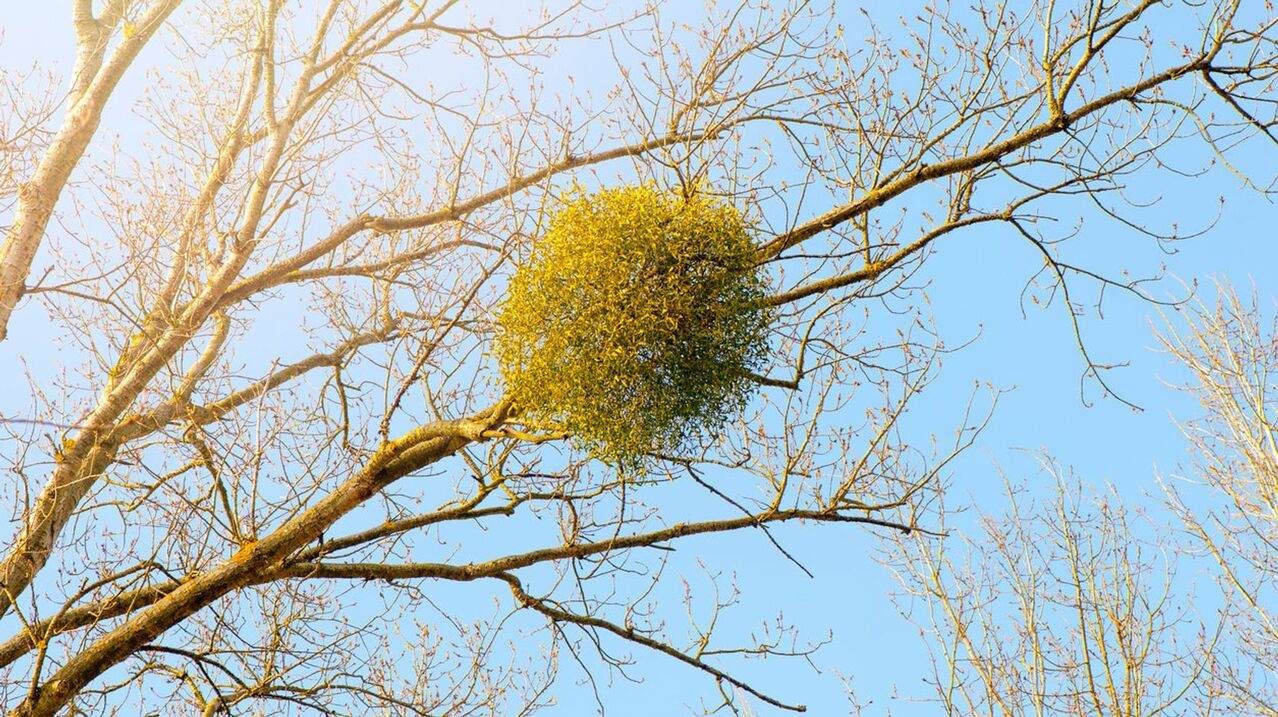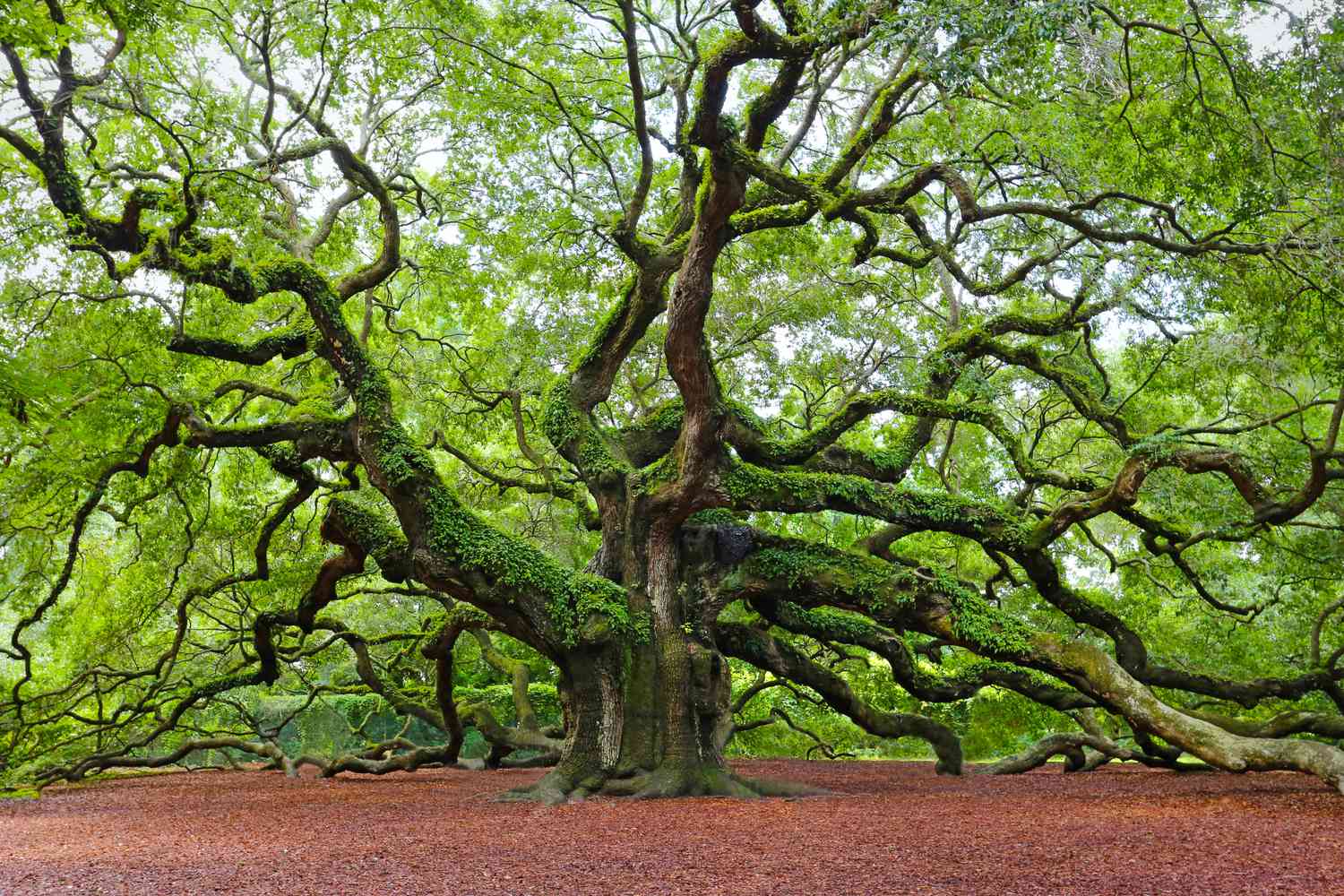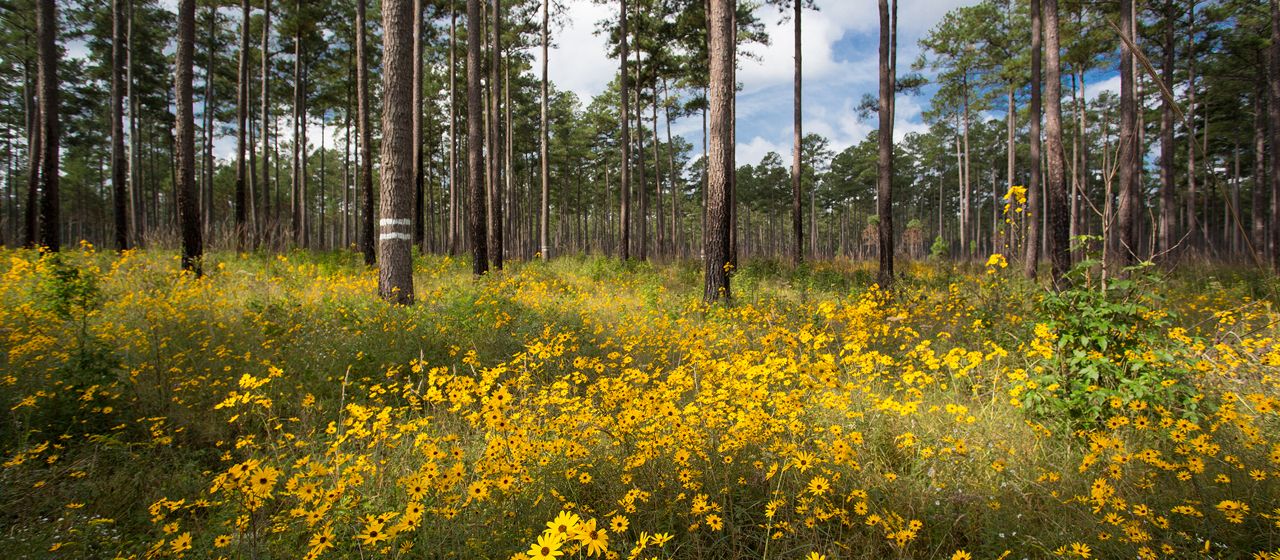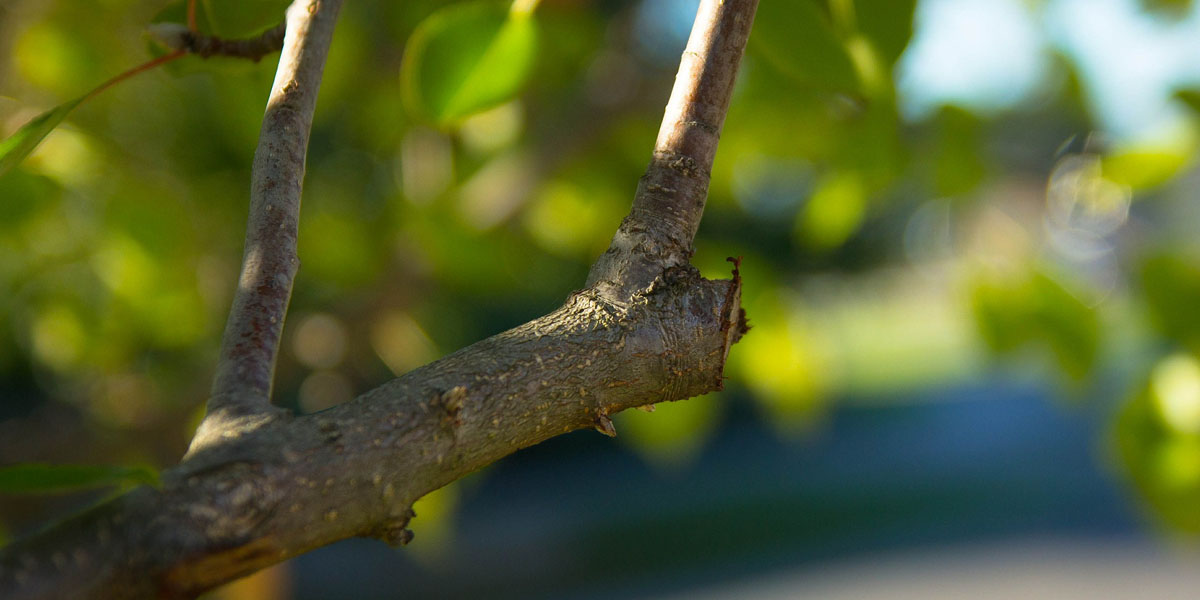Home>Types of Gardening>Ornamental Gardening>What Trees Does Mistletoe Grow On


Ornamental Gardening
What Trees Does Mistletoe Grow On
Modified: January 22, 2024
Discover the enchanting world of mistletoe and its preferred hosts in ornamental gardening. Learn which trees attract this festive plant and create your own whimsical holiday tradition.
(Many of the links in this article redirect to a specific reviewed product. Your purchase of these products through affiliate links helps to generate commission for Chicagolandgardening.com, at no extra cost. Learn more)
Table of Contents
- Introduction
- History and Traditions of Mistletoe
- Types of Trees that Mistletoe Grows On
- Oak Trees
- Apple Trees
- Willow Trees
- Poplar Trees
- Pine Trees
- Other Trees
- Role of Host Trees in Mistletoe Growth
- Mistletoe Harvesting and Distribution
- Uses of Mistletoe
- Medicinal Properties of Mistletoe
- Mistletoe Conservation and Environmental Impact
- Conclusion
Introduction
Welcome to the enchanting world of mistletoe and the trees it chooses to call home. Mistletoe has long been associated with holiday traditions, romance, and mystical folklore. The image of two individuals sharing a kiss beneath a hanging sprig of mistletoe is a scene ingrained in our cultural consciousness. But have you ever wondered which trees this elusive plant grows on?
Mistletoe, known scientifically as Viscum album, is a fascinating hemiparasitic plant that grows on the branches of various tree species. While it is commonly associated with festive celebrations, mistletoe has a rich history and plays unique ecological roles in different ecosystems.
In this article, we will explore the different types of trees that mistletoe grows on and delve into the intriguing relationship between these trees and the mistletoe plant. We will also uncover the role mistletoe has played in human traditions and its medicinal properties. So, let’s embark on this journey into the captivating world of mistletoe and its tree hosts.
History and Traditions of Mistletoe
Mistletoe has a long and storied history intertwined with various cultural and religious traditions. Ancient civilizations, such as the Druids, Greeks, and Norse, considered mistletoe to be a sacred plant with powerful mystical properties.
The Druids, an ancient Celtic priesthood, believed that mistletoe had healing powers and could ward off evil spirits. They conducted elaborate rituals and ceremonies during the winter solstice, where mistletoe was harvested with a golden sickle and distributed among the people. The Druids believed that mistletoe brought good luck and fertility.
In Norse mythology, mistletoe was associated with the deities Balder, the god of light and joy, and Frigga, the goddess of love and beauty. According to Norse folklore, mistletoe was a symbol of peace and reconciliation. Enemies encountering each other under a tree with mistletoe were obliged to lay down their weapons and observe a truce until the next day.
Over time, mistletoe became intertwined with Christmas traditions. Hanging a sprig of mistletoe in doorways became a custom, and according to tradition, anyone standing beneath it could not refuse a kiss. This practice dates back to the Victorian era in England and spread to other parts of the world, becoming a beloved holiday tradition.
Today, mistletoe holds a special place in our hearts during the holiday season, symbolizing love, joy, and celebration. It is a reminder of ancient traditions and a way to bring people closer together in a spirit of affection and goodwill.
Next, let’s explore the fascinating array of trees that serve as hosts to the mistletoe plant.
Types of Trees that Mistletoe Grows On
Mistletoe plants have adapted to grow on a variety of tree species, making themselves at home in different habitats around the world. While mistletoe can technically grow on any tree, there are several tree species that are commonly associated with hosting mistletoe.
Here are some of the trees that mistletoe is commonly found on:
- Oak Trees: One of the most common tree species where mistletoe thrives is the oak tree. Oak trees provide the perfect combination of strong branches and open crowns, allowing mistletoe to establish itself and receive an ample amount of sunlight.
- Apple Trees: Mistletoe and apple trees have a historic association. In fact, mistletoe is often referred to as the “apple of the oak.” Apple trees offer a suitable structure for mistletoe to grow and can often be found hosting mistletoe in orchards.
- Willow Trees: Mistletoe can also be found growing on willow trees. Willow trees have soft, pliable branches, which make it easier for mistletoe seeds to penetrate and establish themselves.
- Poplar Trees: Poplar trees, with their sturdy branches and fast growth rate, are another popular host for mistletoe. The mistletoe plant can create a striking contrast against the slender leaves of the poplar tree.
- Pine Trees: While less common than other tree species, mistletoe can also grow on certain types of pine trees. These evergreen conifers provide a unique habitat for mistletoe, enriching the diverse ecosystem they inhabit.
It’s important to note that mistletoe chooses its host trees carefully. The mistletoe plant requires specific conditions to grow, including sufficient sunlight and optimal tree structures that provide a sturdy base for its growth.
Now that we’ve explored the trees that commonly host mistletoe, let’s delve deeper into the role these trees play in facilitating mistletoe growth.
Oak Trees
When it comes to hosting mistletoe, oak trees are one of the most favored tree species. The structural characteristics and biology of oak trees make them an ideal habitat for mistletoe to flourish.
Oak trees provide a strong and sturdy framework for mistletoe growth. Their wide-spreading branches, often accompanied by an open crown, offer ample space for mistletoe to establish itself. This allows mistletoe to receive an optimal amount of sunlight, crucial for its photosynthetic process and overall growth.
In addition to structural advantages, oak trees also offer long-term support for mistletoe plants. Once mistletoe successfully establishes itself on an oak tree, it develops a network of penetrating roots known as haustoria. These roots seek out the oak tree’s vascular system, tapping into nutrients and water for the mistletoe’s sustenance.
Oak trees’ robust nature and longevity provide a stable and enduring host for mistletoe. As the mistletoe plant continues to grow and thrive, it can produce more seeds, further spreading mistletoe throughout the oak tree canopy and potentially onto neighboring trees.
Not only do oak trees support the growth of mistletoe, but they also benefit from this symbiotic relationship. The presence of mistletoe on an oak tree can enhance biodiversity and provide habitat and food sources for various birds and insects. Mistletoe berries are consumed by birds, who then disperse the seeds through their droppings, aiding in the spread of mistletoe.
It is important to note that while mistletoe can benefit from its relationship with oak trees, excessive mistletoe infestation can negatively impact the host tree’s health. Severe mistletoe infestation can weaken oak trees, making them more susceptible to diseases and other stress factors. Therefore, proper management and monitoring of mistletoe growth on oak trees are crucial for maintaining the health of both the host tree and the mistletoe population.
Now that we’ve explored the significance of mistletoe growing on oak trees, let’s move on to another tree species commonly associated with mistletoe growth: apple trees.
Apple Trees
Apple trees and mistletoe have a long-standing association, with mistletoe often referred to as the “apple of the oak.” It is no surprise, then, that apple trees are among the favored hosts for mistletoe growth.
Apple trees provide a favorable environment for mistletoe to thrive. With their spreading branches and open canopies, apple trees offer ample space for mistletoe plants to establish themselves. The relatively thin and flexible branches of apple trees make it easier for mistletoe seeds to penetrate the tree’s bark and anchor themselves.
Mistletoe and apple trees share an intriguing symbiotic relationship. As mistletoe grows on the branches of apple trees, it taps into the tree’s vascular system, absorbing nutrients and water. In return, mistletoe provides a source of nourishment for various bird species that feed on its berries. The birds then aid in dispersing mistletoe seeds by depositing them on the hosts’ branches or nearby trees.
While mistletoe can benefit from its association with apple trees, an excessive infestation can have negative implications for the host’s health. Mistletoe can weaken the apple tree, reducing its productivity and overall vigor. As a result, proper management of mistletoe infestation is essential to maintain the health and productivity of apple trees.
Interestingly, the presence of mistletoe on apple trees has been known to stimulate bud development, resulting in increased fruit production. This phenomenon has been observed in certain apple orchards, where controlled mistletoe infestations have led to enhanced fruit yield.
Mistletoe’s association with apple trees carries cultural significance as well. In many cultures, mistletoe is seen as a symbol of fertility and abundance. The presence of mistletoe on apple trees during the holiday season adds to the festive atmosphere and reinforces the notion of prosperity and growth.
Now that we’ve explored the captivating relationship between mistletoe and apple trees, let’s move on to another tree species that serves as a host: willow trees.
Willow Trees
Willow trees, with their elegant and flexible branches, are another preferred host for mistletoe growth. These graceful trees provide a welcoming habitat for mistletoe to establish itself and thrive.
One of the reasons why willow trees are suitable hosts for mistletoe is their pliable branches. Mistletoe seeds can easily penetrate the bark of willow trees, allowing them to anchor and germinate. The soft and pliant nature of willow branches provides an ideal environment for mistletoe to establish a strong connection with the tree.
Moreover, willow trees often have a high moisture content, which can provide a favorable microclimate for mistletoe growth. The moist environment around willow trees allows mistletoe to absorb water and nutrients, promoting its development and expansion.
It is worth noting that mistletoe can have varying effects on willow trees depending on the intensity of infestation. While light to moderate levels of mistletoe growth may not have a significant impact on the health of the tree, heavy infestations can weaken the tree’s growth, productivity, and longevity.
Mistletoe growing on willow trees can provide ecological benefits as well. The mistletoe berries are a valuable winter food source for birds, and the dense growth of mistletoe clumps can provide shelter for various bird species. Additionally, the presence of mistletoe can contribute to the overall biodiversity of the willow tree habitat by hosting a diverse range of organisms.
Willow trees hold cultural significance in association with mistletoe as well. In some folklore, willow trees are associated with magic, healing, and fertility, aligning with mistletoe’s mythical and symbolic nature. The combination of mistletoe and willow trees evokes imagery of enchantment and natural wonder.
Now that we’ve explored mistletoe’s affinity for willow trees, let’s move on to another popular host tree: poplar trees.
Poplar Trees
Poplar trees are widely recognized for their rapid growth and tall stature, making them an attractive host for mistletoe plants. These majestic trees provide a sturdy framework for mistletoe to thrive and spread throughout their branches.
The strong branches of poplar trees offer ideal conditions for mistletoe to establish itself. As mistletoe seeds are dispersed and land on the branches of poplar trees, they can take root and penetrate the bark, leading to the growth of mistletoe plants. The slender leaves of the poplar tree create a striking contrast against the vibrant green foliage of the mistletoe, enhancing the visual beauty of the symbiotic relationship.
Mistletoe’s presence on poplar trees can have both positive and negative effects. On one hand, mistletoe can provide additional biodiversity to the poplar tree habitat. The mistletoe berries are a significant food source for birds who help disperse the mistletoe seeds, contributing to the spread and growth of mistletoe populations.
On the other hand, excessive mistletoe infestations can put a strain on poplar trees. Mistletoe extracts water and nutrients from the host tree, potentially weakening the tree’s overall growth and vitality. Additionally, mistletoe can create an imbalance in the tree’s canopy structure, affecting the distribution of light and potentially hindering the growth of other plants and organisms within the poplar tree’s ecosystem.
Proper management of mistletoe infestation on poplar trees is crucial to maintain the health and longevity of both the host tree and the mistletoe population. Pruning and removing heavily infested branches can help reduce the negative impact of mistletoe on poplar trees while still allowing for the presence of mistletoe and its associated benefits.
The combination of mistletoe and poplar trees presents a captivating sight, capturing the imagination and admiration of those who come across these symbiotic partners. It embodies the intricate and fascinating interplay between plants and their environment.
Now that we’ve explored the unique relationship between mistletoe and poplar trees, let’s continue our journey by investigating mistletoe’s association with another prominent tree species: pine trees.
Pine Trees
While pine trees may not be the most common host for mistletoe, there are certain species within the pine family that can support mistletoe growth. Pine trees provide a unique habitat for mistletoe, adding to the diverse ecosystems where mistletoe can be found.
Mistletoe growing on pine trees is typically seen in warmer regions with specific pine species, such as the Jeffrey pine and Lodgepole pine. Pine trees offer a different type of environment for mistletoe compared to other host trees.
One reason why mistletoe can grow on pine trees is due to their tolerance for lower light levels. Mistletoe relies on photosynthesis for energy production, and although pine trees have dense foliage, they still allow enough sunlight to filter through for mistletoe to carry out photosynthesis.
The resin-rich bark of pine trees can also provide an anchoring point for mistletoe seeds to germinate and establish themselves. Once mistletoe penetrates the bark and forms connections with the tree’s vascular system, it can draw nutrients and water from the tree, facilitating its growth and development.
It’s important to note that mistletoe on pine trees is not as common as on other tree species, and the degree of infestation can vary. However, when mistletoe does establish itself on pine trees, it can create an interesting visual contrast. The vibrant green color of mistletoe stands out against the backdrop of pine needles, heightening the aesthetic appeal of both the mistletoe and the pine tree.
While the ecological impact of mistletoe on pine trees is not extensively studied, it is believed to have minimal effect on the overall health of the host tree. Mistletoe infestations on pine trees are typically not severe enough to cause significant harm or impair the tree’s growth.
The presence of mistletoe on pine trees serves as a reminder of the adaptability of both the mistletoe plant and the pine tree itself. It highlights the capacity of nature to create harmonious relationships between different organisms within various environmental settings.
Now that we’ve explored the fascinating association between mistletoe and pine trees, let’s move on to discuss other tree species that can serve as hosts for mistletoe.
Other Trees
In addition to the specific tree species we have discussed so far, mistletoe can also grow on a variety of other trees. While these tree species may not be as commonly associated with mistletoe, they still provide suitable conditions for its growth and development.
Some of the other trees that can host mistletoe include:
- Maple Trees: Maple trees, with their dense canopies and robust branches, can support mistletoe growth. Mistletoe can be seen hanging from the branches of maple trees, adding a touch of intrigue and natural beauty to these majestic trees.
- Elm Trees: Elm trees can also serve as hosts for mistletoe. The robust and sturdy branches of elm trees provide the necessary support for mistletoe to establish and grow. Elm trees with mistletoe can create a unique sight within the landscape.
- Birch Trees: Birch trees may occasionally host mistletoe. Their distinctive bark and slender branches offer a different aesthetic when combined with the vibrant green foliage of mistletoe. The presence of mistletoe on birch trees adds an element of surprise and natural elegance.
- Hawthorn Trees: Hawthorn trees are known to be hosts for mistletoe in certain regions. These trees provide a structural framework for mistletoe to anchor and grow, creating a captivating and enchanting sight.
It is essential to recognize that mistletoe can adapt and grow on various tree species, as long as the conditions are suitable for its establishment. Each host tree contributes to the diversity and beauty of mistletoe habitats, showcasing the versatility and resilience of both the mistletoe plant and the trees it chooses to grow upon.
The presence of mistletoe on these diverse tree species further emphasizes the interconnectedness and interdependence of different organisms in ecosystems. Mistletoe serves as a reminder of the intricate web of life and the symbiotic relationships that exist within nature.
Now that we have explored the various trees that can host mistletoe, let’s examine the crucial role that these host trees play in the growth and propagation of mistletoe.
Role of Host Trees in Mistletoe Growth
The role of host trees in the growth and development of mistletoe is vital to the survival of this unique hemiparasitic plant. Host trees provide the physical support and essential resources that mistletoe needs to thrive and reproduce.
One of the primary roles of host trees is to provide a suitable structure for mistletoe to grow and establish itself. The branches of host trees offer a stable framework for mistletoe to anchor its roots and grow upward. They create a platform for mistletoe to access sunlight, crucial for its photosynthetic process and energy production.
Host trees also play a crucial role in providing mistletoe with essential resources such as water and nutrients. Mistletoe plants establish connections with the host tree’s vascular system through haustoria, specialized roots that penetrate the tree’s tissues. These connections enable mistletoe to draw water and nutrients directly from the host tree, facilitating its growth and survival.
The host tree’s ability to transport resources through its vascular system allows mistletoe to benefit from the nutrients it needs while minimizing competition with other plants for these resources. This unique interaction allows mistletoe to persist even in nutrient-deficient environments.
Furthermore, host trees contribute to the reproduction and spread of mistletoe. Mistletoe produces berries that are consumed by birds. As the birds feed on these berries, they aid in the dispersal of mistletoe seeds. The seeds may be dropped directly onto the host tree or carried to neighboring trees, enabling mistletoe to colonize new areas and establish new populations.
In some cases, host trees may also benefit from their association with mistletoe. The presence of mistletoe on a tree can increase biodiversity by attracting birds and other organisms that rely on mistletoe berries for food or shelter. Additionally, mistletoe infestations can lead to branching vigor, stimulating new growth and potentially enhancing the overall health and productivity of the host tree.
However, it is important to note that excessive mistletoe infestations can have negative effects on host trees. Heavy infestations can weaken the host tree, impacting its growth, structural stability, and overall productivity.
The relationship between mistletoe and its host trees highlights the intricate balance and interdependence within ecosystems. It showcases how plants and trees can form symbiotic relationships, each playing a unique role in supporting and sustaining the other.
Now that we’ve explored the role of host trees, let’s delve into the process of mistletoe harvesting and distribution.
Mistletoe Harvesting and Distribution
Mistletoe harvesting and distribution have a long history tied to cultural traditions and seasonal festivities. The process involves collecting mistletoe from host trees and distributing it for various purposes, including decorative use and customary rituals.
Traditionally, mistletoe harvesting was done by climbing trees and carefully cutting the mistletoe branches using specialized tools. This required skilled knowledge and expertise to ensure minimal damage to the host tree while obtaining the desired mistletoe. Today, mistletoe harvesting may still involve climbing trees, but it can also be done using ladders or harvested from trees during routine management practices.
Mistletoe is often harvested during late autumn or early winter when it is at its peak and adorned with fresh, vibrant foliage, making it visually appealing. Harvesting at this time ensures that the mistletoe retains its freshness and does not wilt or dry out too quickly.
Once harvested, mistletoe is typically bundled together and packaged for distribution. It is often sold in markets, florists, or online platforms, making it accessible for individuals who wish to incorporate mistletoe into their holiday decorations or traditions.
During the holiday season, mistletoe is prominently displayed in homes, public places, and at festive gatherings. It is hung from doorways or ceilings, and tradition holds that anyone standing beneath it must share a kiss with another person. This customary ritual adds an element of joy and lightheartedness to holiday celebrations, symbolizing love, good fortune, and connection.
In addition to its decorative use, mistletoe is sometimes distributed for conservation efforts. Conservation organizations or experts may harvest mistletoe to establish new mistletoe populations in specific areas as part of habitat restoration projects. This helps maintain the biodiversity of ecosystems and supports the conservation of mistletoe and its associated organisms.
It is worth noting that the sustainability and ethical considerations of mistletoe harvesting and distribution are important. Sustainable practices should be followed to ensure the long-term health and viability of mistletoe populations and their supporting ecosystems. Harvesting should be done in moderation, with care taken not to overexploit mistletoe resources or harm the host trees during the process.
Mistletoe harvesting and distribution continue to be intertwined with cultural traditions and holiday festivities. Whether it’s for decorative use or conservation initiatives, mistletoe serves as a symbol of celebration and connection.
Now that we’ve explored mistletoe harvesting and distribution, let’s examine the various uses of mistletoe beyond its decorative appeal.
Uses of Mistletoe
Mistletoe is not only a symbol of holiday traditions and romantic encounters but also holds significance in various uses beyond its decorative appeal. Throughout history, mistletoe has been utilized for its medicinal properties, ceremonial purposes, and even as a source of inspiration for different forms of art and literature.
Medicinal Purposes: Mistletoe has a long-standing history of being used in traditional herbal medicine. Extracts from mistletoe have been used to address a variety of ailments, including cardiovascular conditions, digestive issues, and respiratory disorders. In modern medicine, mistletoe extracts are studied for their potential in immune stimulation and as an adjunctive therapy in cancer treatment.
Ceremonial and Spiritual Purposes: Mistletoe holds spiritual significance in many cultures and has been utilized in ceremonial rituals. Ancient civilizations believed that mistletoe possessed mystical and healing powers, and it was often used in sacred ceremonies and rituals related to fertility, protection, and cleansing. In some societies, mistletoe was used to create talismans or amulets believed to bring good luck and ward off evil.
Ornamental and Decorative Use: Mistletoe is widely recognized for its ornamental beauty and its association with holiday decorations. It is often incorporated into wreaths, garlands, and other festive displays during the winter holiday season. Mistletoe’s vibrant green leaves and white berries add a touch of natural elegance and symbolism to these decorative arrangements, creating a warm and inviting atmosphere.
Inspiration for Art and Literature: Mistletoe’s captivating presence has long inspired artists, writers, and poets across different cultures and time periods. Its symbolism of love, friendship, and fertility has been portrayed in numerous works of art, literature, and folklore. Mistletoe often appears as a motif in romantic literature, symbolizing a connection between individuals and moments of affection.
With its versatile uses and rich cultural significance, mistletoe continues to capture our imagination and serve as a source of inspiration for various purposes.
Next, let’s explore the medicinal properties associated with mistletoe and its potential benefits in healthcare.
Medicinal Properties of Mistletoe
Mistletoe has been recognized for its potential medicinal properties for centuries. It has been used in traditional herbal medicine for various health conditions, and modern scientific research continues to explore its potential benefits in healthcare.
One of the primary active compounds found in mistletoe is lectin, a protein that can stimulate the immune system. Mistletoe extracts, specifically those derived from the species Viscum album, have been studied for their immunomodulatory effects, with potential benefits in cancer treatment.
Research suggests that mistletoe extracts can enhance the activity of certain immune cells, such as natural killer cells and T-lymphocytes, which play a crucial role in the body’s defense against cancer cells. By stimulating the immune system, mistletoe extracts may help in boosting the body’s natural defenses and potentially contribute to the management of cancer.
Mistletoe extract injections have been used as an adjunctive therapy in cancer treatment, particularly in Europe. They are often administered alongside conventional cancer therapies, such as chemotherapy and radiation therapy, to support the immune system and improve overall well-being. Mistletoe therapy aims to enhance the body’s immune response, alleviate treatment side effects, and potentially improve the quality of life for cancer patients.
Studies investigating the effects of mistletoe therapy in cancer patients have shown mixed results. Some studies suggest potential benefits, such as improved quality of life, reduced side effects of chemotherapy, and increased overall survival rates in certain cancer types. However, more research is needed to establish the efficacy and safety of mistletoe therapy, as the existing evidence is still limited and inconclusive.
It is important to note that mistletoe therapy should always be conducted under the guidance of qualified healthcare professionals. The dosage, administration, and suitability of mistletoe therapy may vary depending on the individual’s specific health condition and treatment plan.
While mistletoe’s potential medicinal properties are intriguing, it is essential to approach mistletoe therapy with caution and consult with healthcare providers who specialize in complementary and alternative medicine.
Further research is needed to better understand the mechanisms of mistletoe’s action, its potential interactions with other medications, and its efficacy in different cancer types.
Now that we’ve explored mistletoe’s potential medicinal properties, let’s delve into the importance of mistletoe conservation and consider its environmental impact.
Mistletoe Conservation and Environmental Impact
Mistletoe conservation is essential to protect the ecological balance and ensure the sustainability of mistletoe populations and their associated habitats. As mistletoe plays a role in biodiversity, its conservation efforts have broader implications for the overall health of ecosystems.
Conservation practices for mistletoe focus on preserving its natural habitats, ensuring proper management of mistletoe-infested trees, and raising awareness about the importance of maintaining mistletoe populations.
One key aspect of mistletoe conservation is the preservation of host trees. Healthy and diverse tree populations are vital for mistletoe to thrive. Protecting host trees from unnecessary damage and promoting proper tree care practices can help maintain suitable habitats for mistletoe growth.
Proper management of mistletoe infestations is another important factor in mistletoe conservation. While mistletoe plays a beneficial role in ecosystems, excessive infestations can negatively impact the health of host trees. Regular monitoring and, if necessary, selective removal of mistletoe-infested branches can help strike a balance between preserving mistletoe populations and ensuring the well-being of host trees.
Preserving the biodiversity within mistletoe habitats is also crucial. Mistletoe provides habitat and food sources for various organisms, including birds, insects, and fungi. Maintaining the health and diversity of these ecosystems is essential for supporting the interconnected web of life.
Additionally, raising awareness and educating the public about the importance of mistletoe conservation can contribute to the long-term preservation of mistletoe populations. Encouraging responsible mistletoe harvesting practices, promoting sustainable use of mistletoe resources, and fostering an appreciation for mistletoe’s ecological value can all play a role in conservation efforts.
It is important to consider the potential environmental impact of mistletoe infestations. While mistletoe is a natural component of ecosystems, heavy infestations can weaken host trees, affecting their growth and stability. This can have cascading effects on the overall ecosystem, potentially altering the composition and dynamics of the plant community.
However, it is essential to maintain a balanced perspective on mistletoe’s environmental impact. Moderate mistletoe infestations can contribute to biodiversity, provide food sources, and support the intricate relationships between species within ecosystems. The key lies in understanding and managing mistletoe populations in a way that preserves the health and diversity of the overall ecosystem.
Conservation efforts for mistletoe encompass a combination of sustainable management practices, responsible harvesting, and maintaining the delicate balance between mistletoe and its host trees and associated organisms.
Now that we have explored mistletoe conservation and its environmental impact, let’s conclude our journey through the fascinating world of mistletoe.
Conclusion
The world of mistletoe is one filled with enchantment, rich traditions, and ecological significance. From its association with holiday celebrations and romantic gestures to its role in supporting diverse ecosystems, mistletoe has captivated our imagination and sparked curiosity for centuries.
As we have explored the types of trees that mistletoe grows on, from the sturdy branches of oak trees to the pliable branches of willow trees, we have come to appreciate the unique relationships between mistletoe and its diverse host trees.
We have delved into mistletoe’s history, steeped in ancient cultural traditions and mystical beliefs, and observed how mistletoe has evolved to become intertwined with our holiday customs and spirit of connection.
Moreover, we’ve examined mistletoe beyond its decorative use, uncovering its potential medicinal properties and role in healthcare. From its supposed immune-boosting effects to its integration into complementary cancer therapies, mistletoe continues to be an area of scientific inquiry and investigation.
Additionally, we’ve recognized the importance of mistletoe conservation efforts to maintain the delicate balance of ecosystems. By properly managing mistletoe infestations and preserving its habitats, we can ensure the sustainability of mistletoe populations and the diverse communities they support.
As we conclude our journey through the world of mistletoe, let us carry with us a deeper appreciation for this remarkable plant, its ecological significance, and its cultural and medicinal importance. Whether it is a simple sprig hanging from a doorway or a subject of scientific study, mistletoe continues to inspire wonder and awe.
So, the next time you encounter mistletoe, take a moment to reflect on the rich tapestry of history, ecology, and tradition represented by this small but remarkable plant. And perhaps, beneath its branches, you may share a kiss and celebrate the joy and unity it symbolizes.







